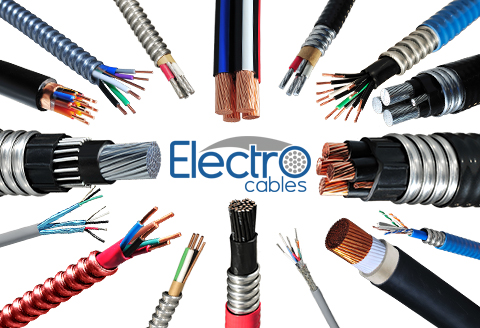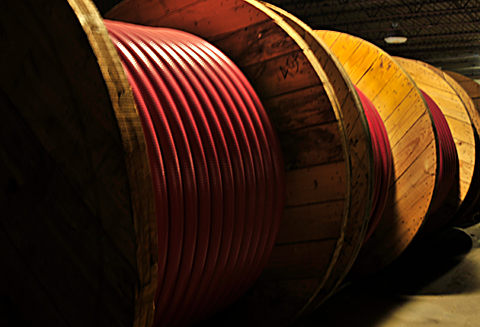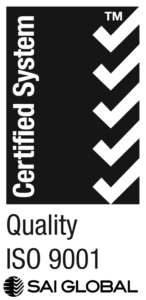A partner you can trust
5 Essential Tips for Choosing the Right Cable Conduit That Last Longer Than 25 Years
In the ever-evolving landscape of electrical and data infrastructure, selecting the right cable conduit has become increasingly crucial. A recent report from Market Research Future indicates that the global cable management market, including cable conduits, is projected to reach $5.8 billion by 2025, highlighting the growing demand for durable and reliable solutions. With an expected lifespan exceeding 25 years, the longevity and performance of cable conduits can significantly influence the operational efficiency and safety of electrical installations. In a world where technological advancements continuously reshape our environments, understanding the characteristics and benefits of various conduit materials is essential for maximizing investment and ensuring compliance with industry standards. This guide presents five essential tips for choosing the right cable conduit that not only meets immediate needs but also withstands the test of time.

Durability Demands: Understanding Material Selection for Long-Lasting Cable Conduits
When selecting a cable conduit intended to last longer than 25 years, understanding material selection is crucial for achieving durability. Common materials used in cable conduits include PVC, fiberglass reinforced plastic (FRP), and metals such as aluminum and steel. Each material brings distinct advantages and challenges. For instance, FRP composites offer excellent corrosion resistance and lightweight properties, making them suitable for various environmental conditions. Recent advancements in manufacturing techniques like filament winding and resin transfer molding have further enhanced the durability and lifecycle of these materials.
To ensure you choose the right conduit, consider the following tips: First, evaluate the environmental conditions where the conduit will be installed, including temperature fluctuations and exposure to moisture. High-performance materials are crucial in such cases. Second, assess the mechanical properties of the conduit material, such as tensile strength and impact resistance, which are vital for maintaining structural integrity over time. Lastly, consult industry reports that highlight performance data; for example, research indicates that high-quality PVC conduits exhibit a lifespan of 25 years or more when properly installed, reinforcing the importance of informed selection in your purchasing decision.
Environmental Resistance: Evaluating Performance Under Extreme Conditions and Regulations
When choosing the right cable conduit for long-lasting performance—beyond the 25-year mark—environmental resistance becomes a pivotal factor. Recent studies highlight the growing importance of evaluating materials' resilience under extreme conditions, especially in light of climate change and its effects on material durability. For instance, environmental instability can compromise the structural integrity of materials, similar to how it affects microbial communities. High-performance conduits must integrate advanced technologies and materials designed to withstand severe environmental stressors, ensuring they remain intact over time.

Innovations in sustainable building materials provide insights into enhancing the durability of cable conduits. Emerging trends suggest that incorporating anti-swelling hydrogels and oxide-based ceramic matrix composites could significantly bolster resistance to harsh environmental conditions. Research has shown that these materials maintain performance levels even when subjected to flooding or extreme temperature fluctuations. Using such materials can minimize degradation risks, ensuring infrastructures are both safe and efficient, reflecting a proactive approach to environmental challenges.
Cost-Effectiveness: Analyzing Long-Term Value vs. Initial Investment in Cable Conduit Solutions
When selecting a cable conduit for long-term use, it's crucial to evaluate not just the initial costs but also the long-term value it offers. According to a report by the National Electrical Contractors Association (NECA), investing in high-quality materials can lead to a reduction in maintenance costs by up to 30% over the lifespan of the conduit. This means that while the upfront investment might seem higher, the return in terms of durability and lower repair needs can greatly outweigh the initial expenditure.
One of the essential tips when considering a conduit is to prioritize materials that offer UV resistance and corrosion protection. For instance, PVC and HDPE conduits are often recommended due to their longevity and ability to withstand harsh environmental conditions, potentially lasting beyond the anticipated 25 years. Additionally, always factor in the installation cost; a well-installed conduit can improve the system's efficiency and longevity, shortening payback periods significantly.
Lastly, consider consulting industry benchmarks like the IEC documents, which indicate that choosing the right conduit can enhance overall electrical system performance by 15-20%. This not only extends the lifespan of the conduits themselves but also optimizes the function and efficiency of the cables housed within them. Investing wisely today ensures reliability and cost-effectiveness tomorrow.
Cost-Effectiveness Analysis of Cable Conduit Solutions
Compliance and Standards: Navigating Industry Regulations for Reliable Cable Conduit Systems
When selecting the right cable conduit for long-term reliability, it is crucial to navigate industry regulations and standards effectively. Compliance with established criteria not only ensures safety but also enhances the longevity of conduit systems. For instance, the U.S. electrical conduit market size was valued at approximately USD 1.72 billion in 2024, with a projected compound annual growth rate (CAGR) of 4.17% through 2032. This growth reflects the increasing demand for quality conduit solutions that meet stringent industry standards.
Recent certifications underscore the importance of compliance in conduit selection. Products such as rigid PVC conduits certified under UL 651 for use with 90°C-rated wire demonstrate a commitment to safety and performance. Similarly, the global flexible electrical conduit market is anticipated to grow significantly, reaching roughly USD 4.7 billion by 2035, highlighting the demand for compliant and reliable conduit systems. Manufacturers achieving distinctions like the BSI Kitemark™ certification exemplify the rigorous standards that can ensure conduit systems last longer than 25 years, reinforcing the need for professionals in the field to prioritize compliance when making their selections.
5 Essential Tips for Choosing the Right Cable Conduit That Last Longer Than 25 Years - Compliance and Standards
| Tip | Description | Key Standards | Expected Lifespan |
|---|---|---|---|
| Material Selection | Choose durable materials that can withstand environmental factors. | ISO 9001, ASTM | 25+ years |
| Installation Practices | Ensure proper installation techniques are followed to prevent damage. | NEC, NEMA | 25+ years |
| Compatibility | Select conduits that are compatible with the existing wiring systems. | IEC, UL | 25+ years |
| Environmental Considerations | Assess environmental factors like moisture, temperature, and UV exposure. | CSA, ASTM | 25+ years |
| Regulatory Compliance | Ensure products meet local and international regulations. | AS/NZS, CE | 25+ years |
Installation Best Practices: Ensuring Longevity through Proper Techniques and Maintenance
When it comes to selecting the right cable conduit for long-term durability, installation practices play a critical role in ensuring the lifespan of the product. Proper techniques during installation can significantly reduce wear and tear, ultimately allowing the conduit to last longer than 25 years. It is essential to evaluate the environment where the conduit will be installed, considering factors such as exposure to chemicals, temperature fluctuations, and physical stress. Ensuring a secure fit and using appropriate sealing methods can mitigate potential damage from moisture and contaminants, which are common challenges in conduit longevity.
Moreover, regular maintenance practices should not be overlooked. Just as with building structures and infrastructures, proactive maintenance on cable conduits can prevent unexpected failures. This includes periodic inspections for signs of wear or environmental impact, as well as addressing any issues promptly. Informed homeowners and builders can adopt lessons learned from other sectors, such as the importance of sustainable practices in wastewater management and the use of innovative construction materials, to enhance the longevity of their installations. By integrating these best practices, individuals can maximize the functionality and lifespan of their cable conduits, ensuring they serve their purpose effectively for decades to come.

Related Posts
-

8 Essential Tips for Choosing the Best Outdoor Electrical Cable for Your Next Project
-

The Ultimate Guide to Choosing the Right Outdoor Electrical Cable for Your Needs
-

Innovative Uses of Electric Cable Wire in Modern Technology
-

The Ultimate Guide to Choosing the Right Electric Cable for Your Projects
-

How to Choose the Right Flexible Cable Conduit for Optimal Electrical Safety
-

How to Effectively Utilize Shore Power Cables for Sustainable Energy Solutions

Products
Products
LEARN MORE
Current Inventory
Current Inventory
LEARN MORE
Custom Solutions
Custom Solutions
WE CAN HELPLighting Power & Control-Signal Cable
This content is restricted to site members. If you are an existing user, please log in. New users may register … LEARN MORE “Lighting Power & Control-Signal Cable”
LOOKING
FOR HELP?
We are here to help. You can contact us or create an account online to have access to special products, technical specifications and our new online quote tool.
ELECTRO CABLES
9 Riverside Drive
P.O. Box 276
Trenton, Ontario
CANADA K8V 5R5
N.A. Toll Free: 888-ELECTRO
(1-888-353-2876)
World: 613-394-4896
Fax: 613-394-4101
Email: sale@machinecables.com
We manufacture cables that are certified by the Canadian Standards Association (CSA), listed by Underwriters Laboratories and/or listed by Intertek (ETL).
Our quality management system is registered to ISO 9001: 2015. Our team is dedicated to consistently providing quality service and products to our customers.

© 2025 ELECTRO CABLES • SITE BY SNAP 360•
